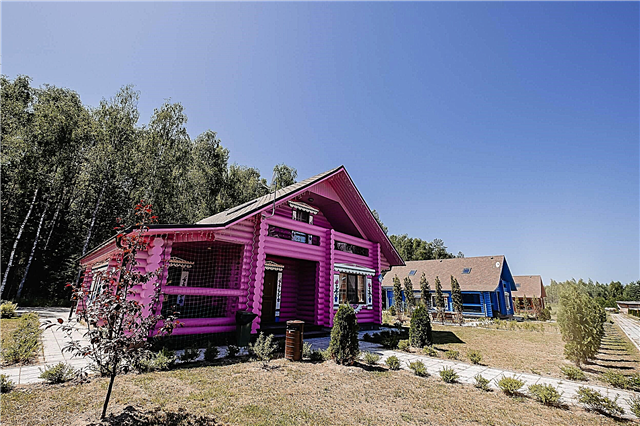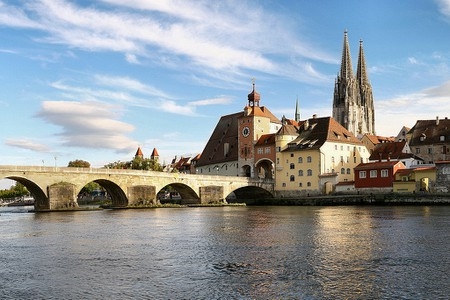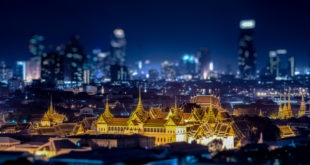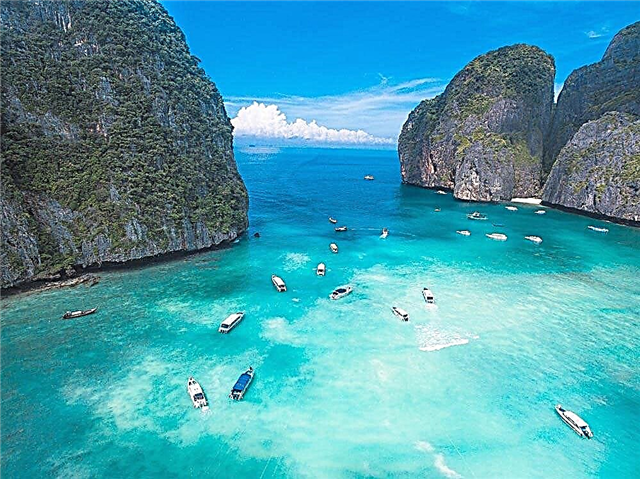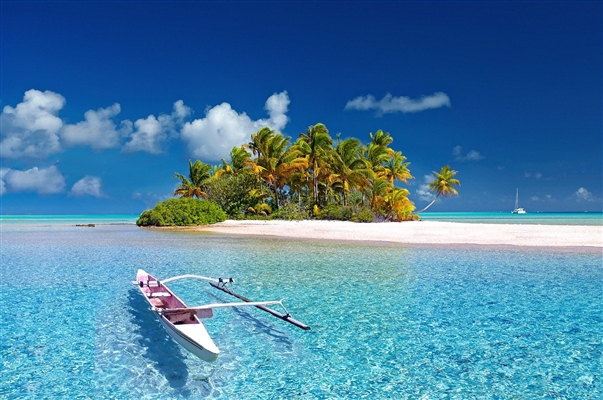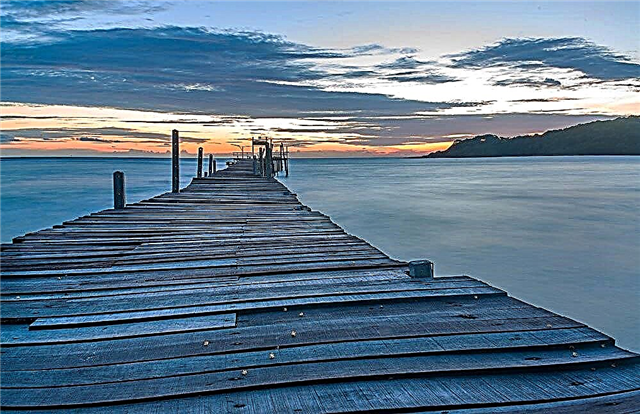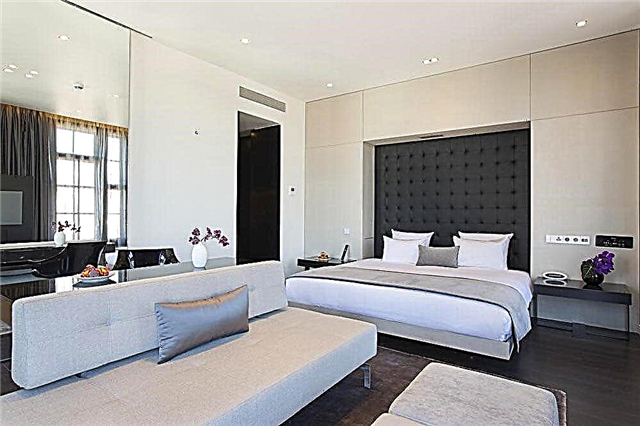Japan uses its territories prudently. In the last century, the government began the process of uniting small settlements to create cities. This policy allowed for the settlement of administrative issues and the creation of large industrial, commercial and tourist centers. Most of the important cities are located on the coast and actively use ports. During the Second World War, they suffered from bombing. However, key historical and cultural monuments have been restored.
Tourists who are not familiar with Japan should start their journey from the capital. Diversity is said to be one of the attractions of Tokyo: everything is there. Also popular is Kyoto - the former main city of the Land of the Rising Sun. In general, it is very difficult to find a city in Japan without national beauties.
The largest cities in Japan
List of the country's main cities in terms of population.
Tokyo
The capital of Japan has one of the smallest areas in terms of prefectures. Moreover, the city is the most populated in the country. Old churches and modern high-rise buildings coexist. Pedestrian streets are abruptly replaced by highways. The shopping districts abound with world brand boutiques. The density of buildings and ubiquitous lighting make Tokyo a never-failing bright "anthill". Political life is also in full swing here - in the parliament building and the royal palace.
Population - 13 942 856 people (2019)

Yokohama
The capital of Kanagawa Prefecture stretches along the coast of Tokyo Bay. There is no airport, tourists will first come to Tokyo. The tallest building in the city is the Landmark Tower. Its observation deck can be accessed by lifts - the speed record holders in Japan. And the entire futuristic business center is called "Port of the Future". Don't miss Chinatown, the Ramen Museum and the Ferris Wheel.
Population - 3 748 781 people (2019)

Osaka
During the Second World War, little remained of the city, especially the historical monuments suffered. Osaka's business district is called Kitaku. Its decorations are the Umeda Sky Building and Osaka Castle. In the southern part there is an arched bridge, Shitennoji Buddhist temple, covered passages. In the north, there are shopping and entertainment districts, as well as the recreated American and European villages.
Population - 2 740 202 people (2019)

Nagoya
The city received the name "middle capital" because it is located between Kyoto and Tokyo. From Nagoya, tourists take away handicrafts made of ceramics and textiles as souvenirs. The local castle is one of the most famous in Japan. A special sword is kept in the Shinto Atsuta shrine - a symbol of the imperial dynasty. In the vicinity of the city, an open-air theme park has been created, where buildings of the Meiji era have been brought from all over the country.
Population - 2 325 918 people (2019)

Sapporo
Located in the southwest of Hokkaido. The 1972 Olympic Games were held here. Slightly less than a third of the island's population lives in this city. Winters are snowy and long, but in summer that is always comfortable. Sapporo has an interesting history that you can learn about at the Hokkaido Kaimaku-no-Mura Museum. Excursions to a local chocolate factory are interesting. Smoking is completely prohibited in the city center.
Population - 1 958 756 people (2019)

Fukuoka
City buildings are located on both banks of the Nakagawa. The river divides Fukuoka into two areas: commercial and business. Defensive walls have been preserved, designed to prevent the Mongols from freely passing through these territories. In the vicinity there are ruins of administrative buildings left over from the times of active trade with Ancient China. Traditional souvenirs are clay toys and bright silk fabrics.
Population - 1 592 657 people (2019)

Kawasaki
A large transportation hub for Kanagawa Prefecture. The port provides the city with a flow of goods, making it an important trade center and tourists. They also build and repair ships here. Extensive excavations have been carried out in the region. The found artifacts were placed in the local museum, which has been operating since the end of the last century. The Science Museum allows you to get acquainted with its exhibits in practice, and the Museum of Japanese Houses is filled with history and traditions.
Population - 1 530 457 people (2019)

Kobe
The capital of Hyogo Prefecture is also the largest port of the Land of the Rising Sun. When the first Europeans arrived in Japan, they began to settle in Kobe. The city was rebuilt at the turn of the 20th and 21st centuries after an earthquake. Sightseeing: the building of the residence of foreign traders, the museum of carpentry tools, Meriken Park, where the monument to the victims of the earthquake is erected, the zoo.
Population - 1 522 944 people (2019)

Kyoto
The former capital of Japan, which performed this function for about a thousand years. The city is multifaceted: architectural landmarks alternate with entertainment centers and examples of urban culture. The main beauties of the city: the imperial palace of Gosho, pavilions built in the national style, including Kinkaku-ji, the "Temple of Pure Water" complex, rock gardens, tombs, the Katsura Rikyu villa and its landscape park.
Population - 1 466 264 people (2019)

Saitama
The capital is the prefecture of the same name. It has existed since the beginning of the 2000s and was formed by combining three settlements into one. The city has built the largest stadium in Japan, and the entire sports complex is ranked among the top-list of similar facilities in Asia. The Museum of Railway Transport exhibits outdated models, including those dating back to the Meiji era. Girls' Day is celebrated in Saitama in March.
Population - 1 307 931 people (2019)

Hiroshima
In 1945 the city was destroyed by atomic bombs dropped. It was rebuilt in a short time by the beginning of the 60s, and little reminds of the tragedy to uninitiated tourists, for example, the Peace Memorial Park. There is also the Cathedral of the Atomic Bomb. Other attractions: the reconstructed Rijou Castle, the original of which was created in the 16th century, the Three Trees Temple, an art museum.
Population - 1 306 589 people (2018)

Sendai
On the one side of the city there is a mountain range, on the other - the coast of the Pacific Ocean. Mount Funagata is the highest point in Sendai. Moreover, some of its areas are located in the flat zone. Local universities are the pride of the entire prefecture. Sightseeing: Rose Park, Hachiman Jinja Shrine, Prince Date Mausoleum. When planning your trip, keep in mind that June and July are traditionally rainy months.
Population - 1 088 669 people (2018)

Chiba
Location - Boso Peninsula. The Chiba port is very important at the regional level. Although the city has been known since the XI century, it received development only in the nineteenth century, when a railway line was stretched to it from the capital. It differs from many other cities by its industrial appearance and the almost complete absence of old buildings. There is an artificial beach, and the reconstructed castle was given as a folk museum.
Population - 980 203 people (2019)

Kitakyushu
The translation of the name is "northern Kyushu", which speaks volumes about the location of the city. Through the port, communication is maintained with another island - Honshu. Kitakyushu Castle was restored half a century ago. It houses the collection of the Matsumoto Seichё Museum. The Moji area features Art Deco buildings. The main entertainment is the Space World theme park. Walking excursions to the Kawachi Dam and Waterfalls are regular.
Population - 940 141 people (2019)

Sakai
The city has had a special administrative and legal status since 2006. It belongs to Osaka Prefecture and is washed by the waters of the Osaka Bay.Sakai's industry is on the rise, but the port has lost its former trading positions, although it continues to be used. The main attraction is associated with Emperor Nintoku. His tomb is one of the largest in the world. The construction area is 320 thousand square meters.
Population - 827 971 people (2019)

Niigata
The capital of the eponymous and northernmost prefecture. Families come to the Yuzawa ski resort. 8 slopes offer night skiing and instructor-led classes, even for younger guests. The Observation Tower of the Sea of Japan hosts an exhibition of gifts from ambassadors and sister cities. Religious sites are the Hakusan Buddhist Temple and the Gokoku-Jinja Zionist Shrine. And you have to come to Lake Hyo-ko in winter: flocks of swans gather here.
Population - 800 582 people (2018)

Hamamatsu
In the east, the city is bounded by the Tenryu River, and in the west by Lake Hamana, where a hot spring resort is open. In the last years of the Second World War, the Hamamatsu areas suffered numerous destruction during the bombing, so they were rebuilt. The city received the title of musical, as musical instruments are made here. Even the observatory looks like a harmonica.
Population - 796 500 people (2019)

Kumamoto
The main city of the eponymous prefecture of the island of Kyushu. Kumamoto's nature is unusual in its combinations: a volcano crater, alpine meadows, subtropical plants. Rice and tobacco are grown in the fields, and fishing is flourishing. Tourist hiking trails pass through the caldera, which connects 5 volcanoes. There is also a museum dedicated to them. The walls of the defensive city castle are painted black, which is rare in Japan.
Population - 739 393 people (2019)

Sagamihara
Occupies the central part of Honshu. The Domi river flows through it. It is famous both for universities and educational institutions of a rank below: medical and veterinary colleges. A center for research into nuclear energy and its use for peaceful purposes has been built. Silk is produced here, and it all began with handicraft workshops. Walking tours allow you to get acquainted with the nature and history of the region.
Population - 722 828 people (2019)

Okayama
It stands on the Asahi River, and a large port is located at the place of its confluence with the Pacific Ocean. Okayama is famous for its castle and garden - one of the three Japanese gardens of Koraku-en. The castle has been restored, only two towers are original. Its halls are occupied by the Museum of Samurai Heritage. The roof is decorated with golden mythical creatures. Tourists take away porcelain products and mats with them. Local cuisine is a gourmet feast.
Population - 720 865 people (2019)

Shizuoka
Occupies land along the Suruga Bay. Agriculture comes to the fore in the district: rice fields, tea plantations, orchards. Here is one of the main natural attractions of all Japan - Mount Fuji. Shizuoka rules Izu Island. Events related to the termination of the policy of self-isolation are associated with it. The city hosts a dozen major festivals throughout the year.
Population - 691 185 people (2019)

Funabashi
The port city of Chiba Prefecture. It is also called the sleeping area of Tokyo. Tourists love to visit the main fish market in the country. Restaurants are bought right there. The city has no specialization: military facilities have been built, there is industrial production, agricultural land on the outskirts, architectural monuments in the traditional style have been preserved. The location in the center of the country made it possible to develop transport links with other cities.
Population - 639 107 people (2019)

Kagoshima
One of the southern cities of the country. From here, there are beautiful views of the Sakurajima stratovolcano. The Meiji Restoration Museum has been built on the Kotsuki River. A memorial museum has been opened in Ishibashi Park, allowing you to delve into history. The botanical garden has collected in one place dozens of plant species from different parts of the world, including palms and cacti. The cuisine is specific even for Japan: fish and meat are prepared according to special recipes.
Population - 595 319 people (2019)

Kawaguchi
The Arakawa River is the natural border between the city and the capital of Japan. Kawaguchi has been producing weapons since the Middle Ages. Many artifacts have been found in its vicinity, which have settled in museums throughout the country. The current inhabitants of the city are the descendants of settlers. Industry and trade are the main areas of activity. Among the iconic sights, it is worth noting the impressive botanical garden "Green Center".
Population - 592,373 people (2019)

Hachioji
From here to the Greater Tokyo about 40 km. Mountains Jinba and Takao are magnets for tourists. Climbing them is also available for beginners. On Takao, the Yakuoin Temple is well preserved. A picturesque stone fence and a bridge were built near the castle. You can relax in the Komiya and Naganuma parks. You should not pass by the complex of mausoleums, called the "imperial cemetery". Among the city's spectacular events, the Hachioji Festival stands out.
Population - 577 560 people (2019)

Himeji
Belongs to Osaka Prefecture. The city is relatively young: it was formed in the middle of the last century by combining several settlements. Himeji's economy relies on manufacturing and tourism, but more on trade. Walking around Mount Ikoma is a popular hiking route. The Hiraoka Buddhist Temple, the central museum and orchards also attract tourists.
Population - 531 298 people (2018)

Matsuyama
Located in the northwest of Shikoku Island. You can travel here all year round: winters are warm, and summers are hot, but the level of humidity does not allow it to burden tourists. Matsuyama Castle is built on the hills, and the terrain complements its appearance. Ninomaru Historical Park is located next to the 17th century building. The city is famous for its thermal springs. The public bath is housed in a spacious three-story building.
Population - 509 139 people (2019)

Utsunomiya
A city in the heart of Honshu. Tokyo is just over an hour away by high-speed train from here. On the outskirts are scattered enterprises of a very different kind, including the companies recognized all over the world, Canon and Honda. The main museum is a collection of several collections under one roof, ranging from local history to art. The most visited place in Utsunomiya is the zoo.
Population - 519 255 people (2019)

Higashiosaka
Occupies the southwestern part of Honshu. Mechanical engineering, metallurgy and oil refining are the city's main sources of income. Higashiosaki's main attraction is Himeji Castle. It is not only recognized as a National Treasure of the country, but also included in the UNESCO World Heritage List. A vast park rises close to it, where an annual holiday is held, timed to coincide with the cherry blossoms.
Population - 494 640 people (2019)

Nishinomiya
Eastern industrial suburb of Osaka. Nishinomiya stretches near Mount Kabuto and is conventionally divided into two parts: a valley in the south and hills in the north. There is Kitayama Botanical Gardens and Kabutoyama Nature Reserve in the surrounding area. Temples of the 9th-10th centuries have also survived, such as the Buddhist Kanno-ji and the Shinto Kosikiiva-jinja and Hirota. A large collection of art is collected in the main museum of Hyogo Prefecture.
Population - 487 413 people (2019)


